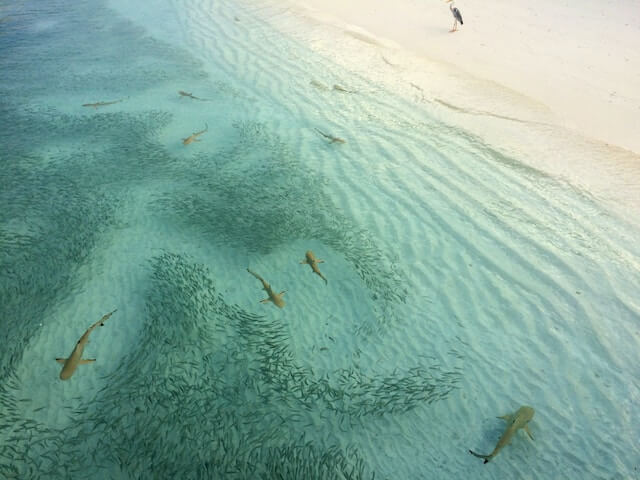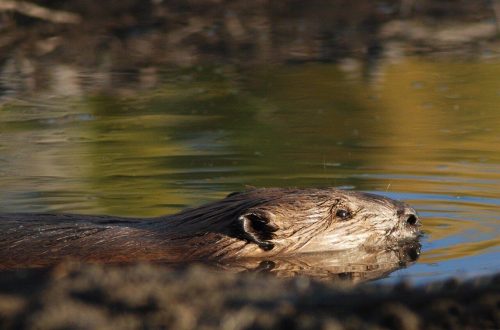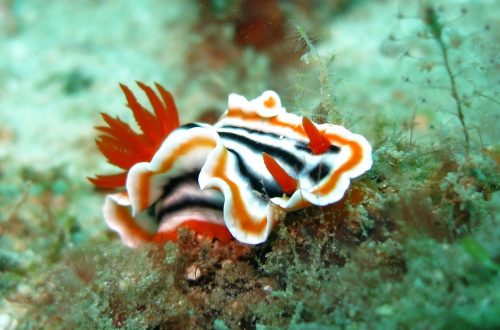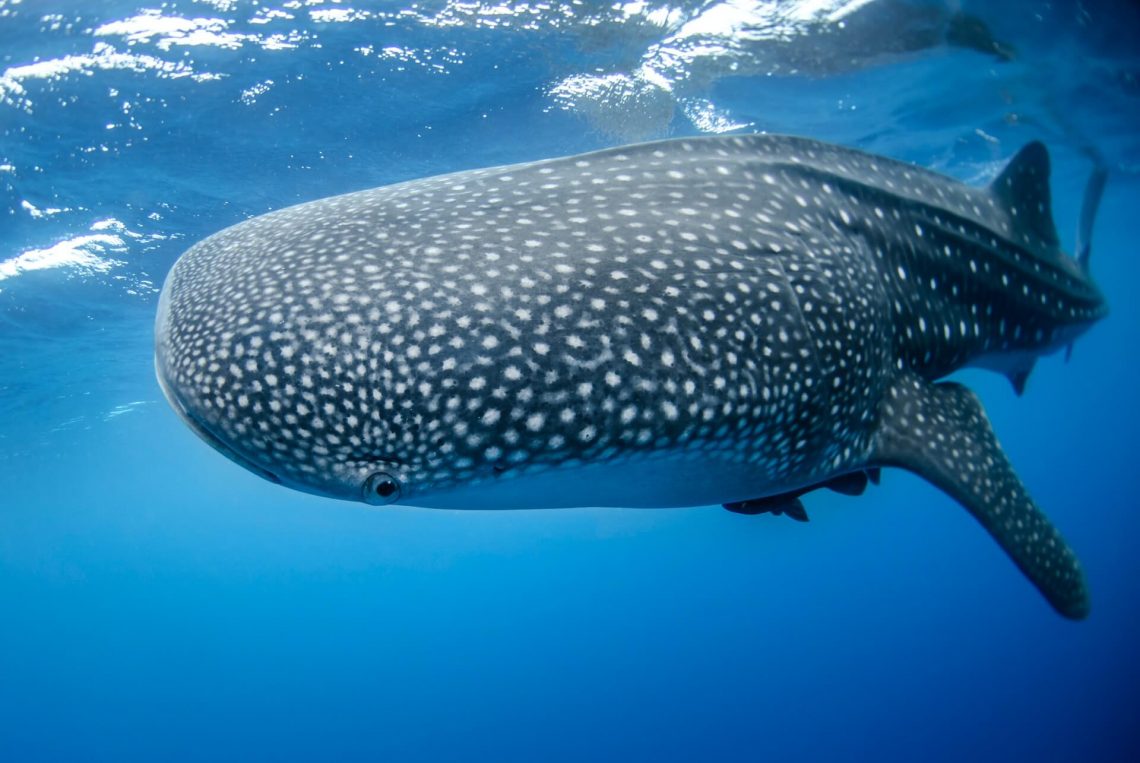
A Guide to The Maldives: Swim with Sharks
The Time I Went to the Maldives to Swim with Sharks
Please note that this article contains affiliate links. While we only recommend products that we believe in, we may receive a small commission from any purchases you make, at no extra cost to you.
A Day in Paradise- Swimming with Sharks in the Maldives
POV: You’ve visited the Maldives to swim with sharks.
You’re sat on the roof of a dhoni, a traditional Maldivian fishing boat, bathed in sunshine and skimming through the waves of the crystal-clear blue waters of the Indian Ocean. Suddenly, the crew starts chatting in excited, rapid Maldivian. You know before you get the call that it’s time. You feel the tight bubbles of adrenaline rise in your stomach.
A whale shark has been sighted. It’s time to get in the water.
Even as you swim through the waters so clear you can see the coral bottom, and so warm it feels like getting in a comforting bath, there’s still a large part of you that thinks this is too good to be true. This stuff happens to other people. The shark has probably moved on by now. It’s okay. You’ve had a nice trip out anyway and seen some rays from the boat.
But there’s still a part of you that can’t give up hoping. A part of you that keeps scanning your eyes left and right, hoping to catch a glimpse.
And then it’s there.
A whale shark. Perhaps 5 or 10m below you, it’s hard to tell, gliding through the water as effortlessly as though it wasn’t a 20,000kg animal, dwarfing your height by a factor of six.
Your eyes fill with tears. This is it. You’re here. You’re in the Maldives. And you’re swimming with sharks.
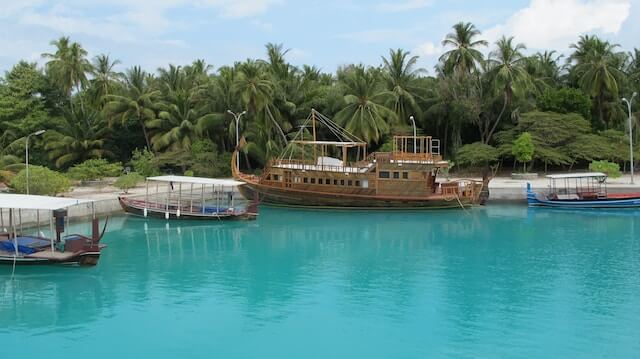
You Can Do It Too
Over 1.6 million people visited the Maldives in 2022. Most are drawn in by the white sandy beaches and glistening blue waters (which are as real as the photos, by the way). However, some of us head to the Maldives in search of spectacular marine life. Immersed in this world you feel like you are swimming through the aquariums of your childhood.
This was me in 2022, visiting the Maldives to swim with sharks.
This had been a lifelong dream of mine. The ocean is perhaps my most enduring love. To be side by side with one of Earth’s most majestic creatures was an opportunity I was not going to miss.
The Maldives is one of those unique places where marine life is accessible to pretty much anyone. Huge, pelagic animals usually only found in the open ocean congregate here to breed and feed. Most hotels and resorts offer boat trips to go and see it with your own eyes.
SCUBA diving qualifications aren’t necessary here. A snorkel and fins is all that is required, and most companies will provide these as part of your trip. You can spend hours, rather than days, at sea. For those who get seasick, the ocean is relatively calm most days. This also helps with making swimming easier than you might have experienced in the ocean elsewhere. The water is warm so there is no shock to the body getting in. Most companies will also provide a buoyancy aid if you are worried about depth.
Click here for my full list of recommendations on snorkeling equipment.
Not Everywhere and Not for Everyone
I realise that for some people, the presence of sharks is, conversely, a reason to avoid getting in the water.
For those people, this article may make it sound as if the waters are teeming with sharks everywhere you go. This is absolutely not the case. In fact, with the exception of the occasional reef shark which are very small, you mostly need to actively seek sharks to come across them. The sharks they do have, particularly in shallower waters, pose very little threat to humans. These will mostly keep their distance by choice.
A Small Plea from Me
Whenever I am wildlife watching I always try to keep at the forefront of my mind that I am visiting the animal’s home and encroaching on their lives.
With this in mind I just want to put out a small plea for you to do the same. Follow the instructions of those running the trip but hold onto your own morals too. Don’t chase or touch the animals. Take nothing more than photographs and take your litter home.
When snorkelling on reefs do not touch, or especially stand on the corals as this damages them. Also consider using a reef-safe sunscreen. I used this one which is pricey, but coral reefs are already having a bad time and it’s our responsibility to take care of what remains of them.
Preserve these experiences so that others can follow in your footsteps and witness the wonders of our world.
Which Sharks, Where and When?
When in the Maldives, Swim with Whale Sharks
Swimming with whale sharks is a bucket list experience for many people.
Growing to lengths of up to 12m and dappled in a distinctive pattern of spots, it’s no wonder that an encounter with Earth’s biggest fish tops the wish list for so many people. I’m sure you could swim with them every day and never fail to be awed.
Despite their size, their diet consists exclusively of plankton, krill and algae, posing no threat to any larger organisms. They sweep their long, open mouths through the surface waters, allowing plankton-rich water to flow over their gills, filtering food from water as they go.
Where and When?
The Maldives is unusual in having two monsoon seasons on different sides of the country. This means plankton is abundant at the surface at different times in different areas and acts as a predictor for whale shark movement.
From December to May, your best bet for finding whale sharks is around the South Ari Atoll, although they are actually present all year round. The South Ari Marine Protected Area forms a nursery for many whale sharks who will mature here for around 30 years before making their way into the open ocean to go it alone.
The South Ari Atoll is home to the Maldives Whale Shark Research Program, which engages in research and involves the community in conservation projects for the animals.
Hanifaru Bay also offers opportunities to see whale sharks between May and November, though I found this to be a lot pricier to get to.
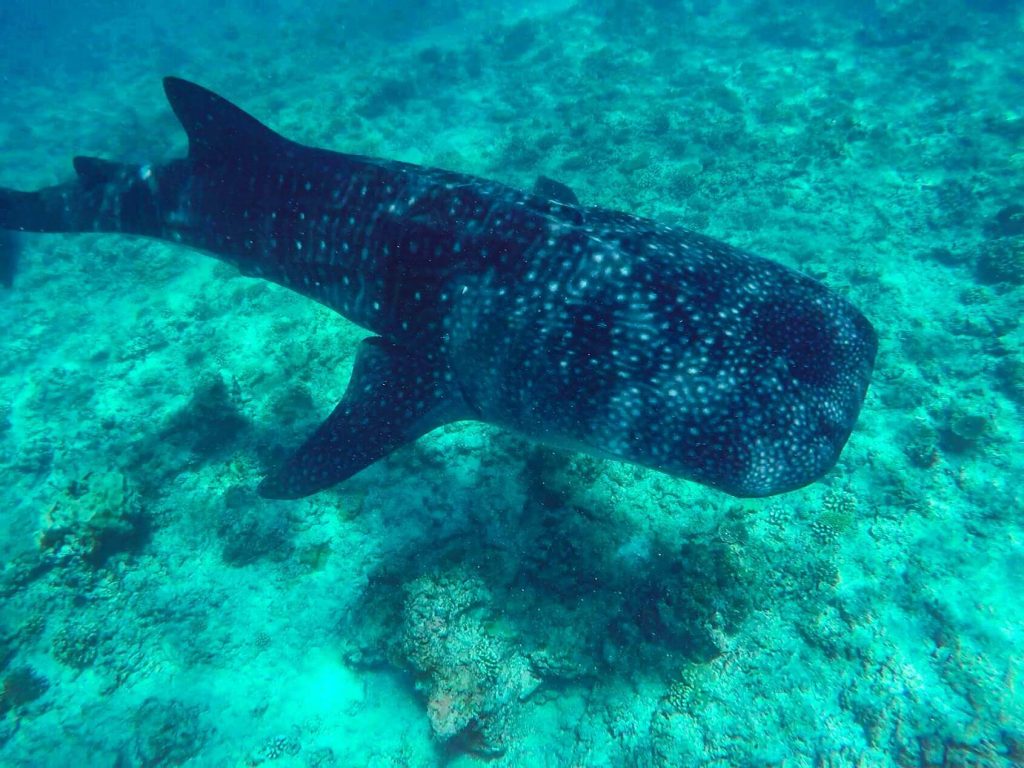
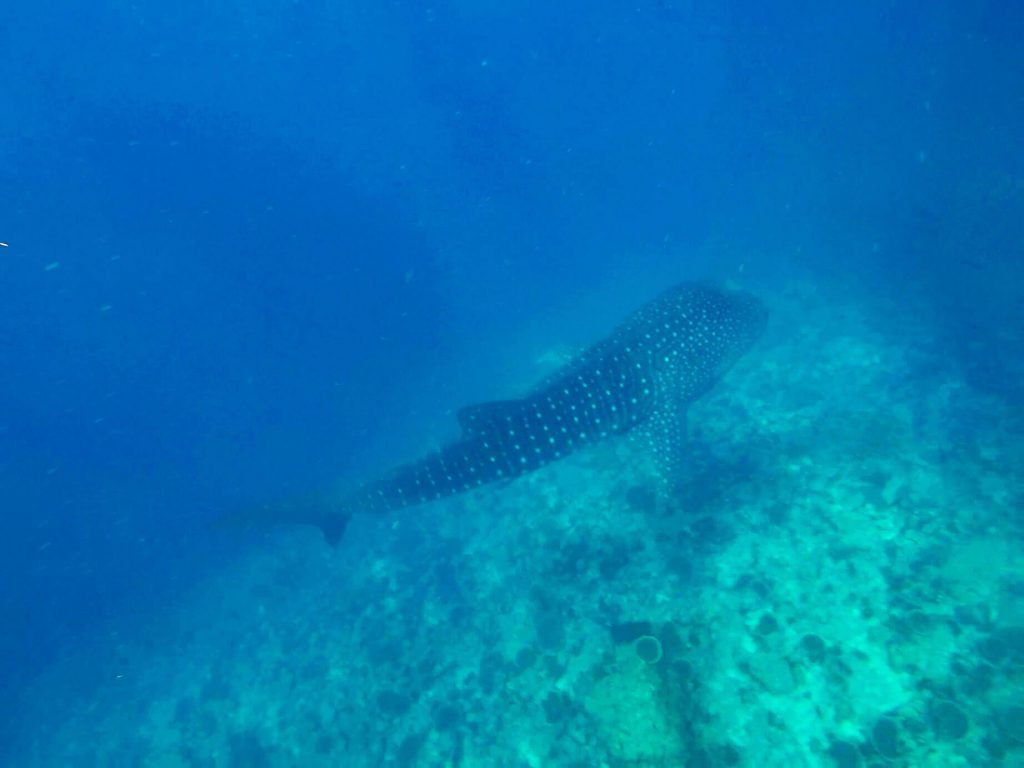
When in the Maldives, Swim with Reef Sharks
Black tip and white tip reef sharks are really the only type of shark you are likely to find by accident in the Maldives. Black tips are far more commonly sighted than white tips.
Occupying most reefs in the area, almost any snorkelling (or SCUBA diving) trip offers the possibility of seeing one. They are often seen frequenting shorelines around beaches and holiday resorts, as their small size allows them access to shallow water.
Although the have the appearance of an archetypal shark, most people (myself included) are surprised at their small size and how non-threatening they are once you are actually in the water with them. In fact, you’ll need to keep your eyes peeled as they can easily go unnoticed!
Where and When?
You don’t need to arrive in the Maldives with any particular plan to see these chaps. Whilst you are far from guaranteed a sighting, keep your eyes peeled from beaches and on reefs. The more time spent in the water, the higher your chances!
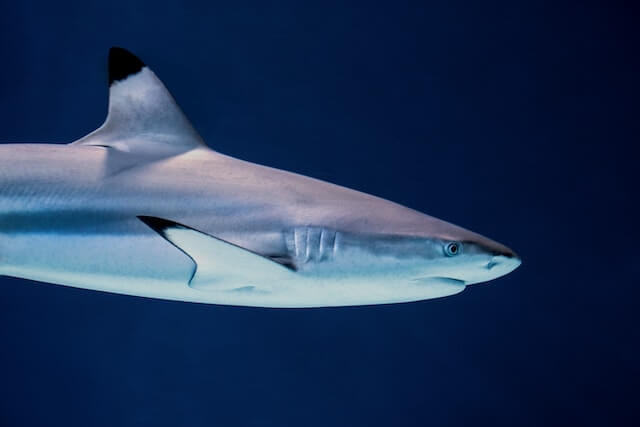
When in the Maldives, Swim with Nurse Sharks
I hadn’t expected to encounter nurse sharks, but it turned out to be a highlight of the holiday. I had one very personal encounter with an individual shark, with just myself and a friend in the water with it, and a second encounter surrounded by as many as forty sharks!
Nurse sharks are a kind of mottled brownish colour and can grow up to 3m in length. They spend most of their days hanging out on the bottom of the ocean, resting.
Where and When?
The best place to find nurse sharks is the Vaavu Atoll, year-round. Having said that, our hotel on Dhigurah in the South Ari Atoll (click here for bookings and availability) also offered excursions, so looking further afield may also offer you the opportunity to pair this with your whale shark encounter.
For the chance to swim with them, you will need to find yourself either on a boat tour or in a hotel in the local area offering dedicated excursions. You are unlikely to have a chance encounter on a random reef in my experience.
One thing to be aware of is that I believe sometimes the sharks may be fed by the resorts to encourage them to gather. I was taken as part of an organised tour without prior information or warning about the stop so was unable to gather my own information and cannot find confirmation of this online, however it may be a question you want to ask your guide beforehand if you are concerned about this practise.
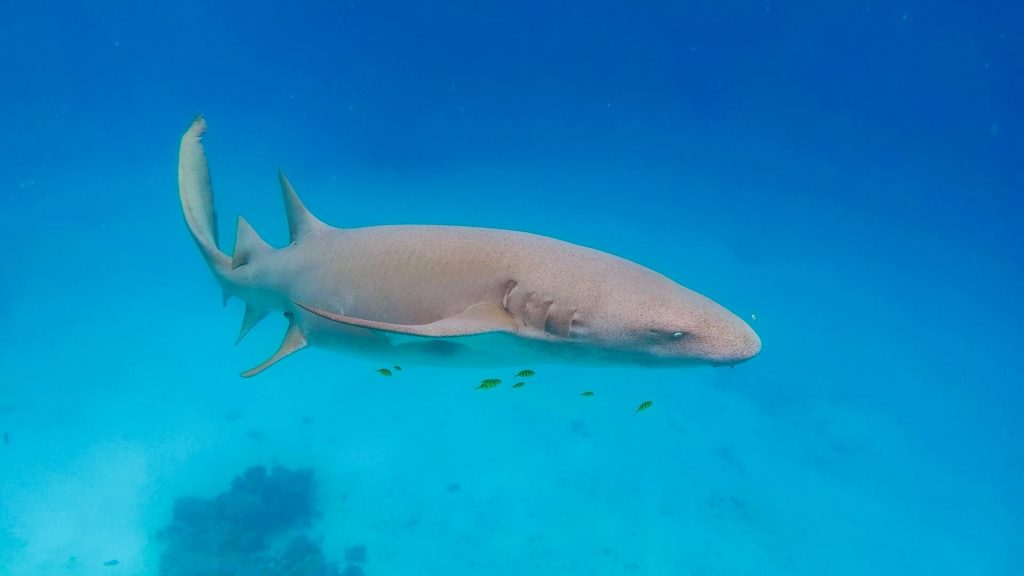
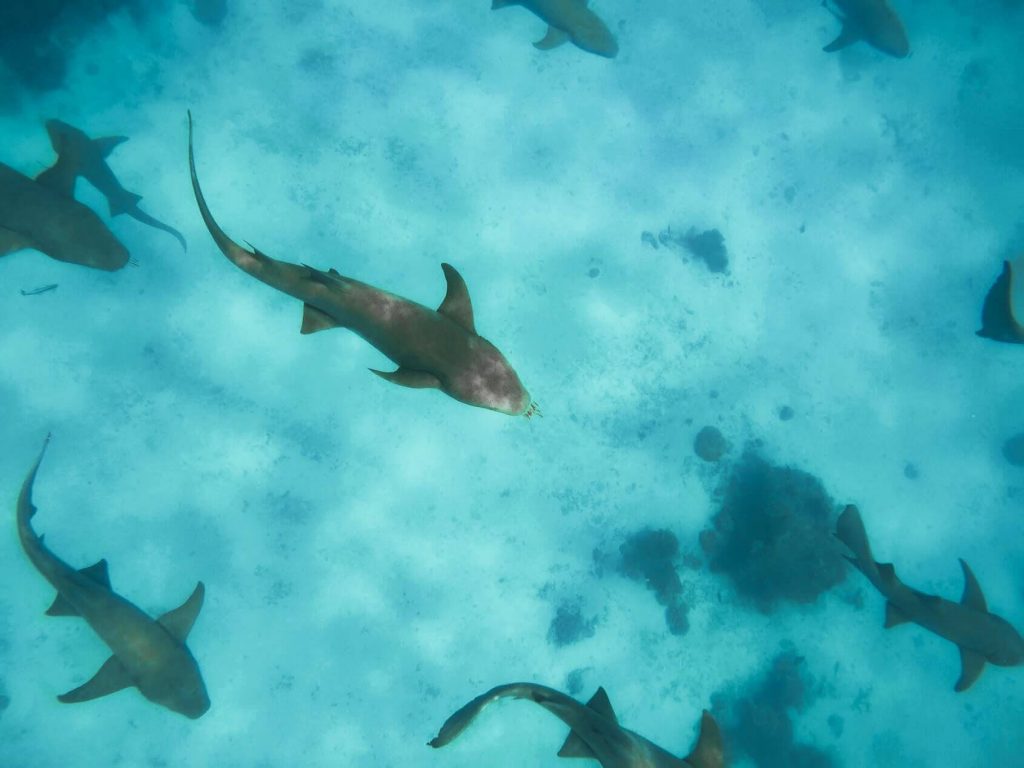
And Many More
I have focussed here exclusively on the species accessible by snorkelling alone, requiring no special skills or qualifications to experience, however, experienced SCUBA divers may also target an encounter with tiger sharks and hammerhead sharks in the Maldives.
There are 26 species of sharks found in the Maldives.
Of course, sharks are not the only spectacular wildlife in the Maldives. If you’d like more information on what other encounters you are likely to experience, I have compiled a realistic list, available here.
Where to Stay
There are a number of different ways to see the Maldives, swim with sharks or simply soak in life ocean-side.
Get to a Resort
When people think of the Maldives their minds are usually drawn to the resorts characterised by the bungalows on stilts over water.
Most of these resorts have an entire island to themselves. This makes them an appealing option for honeymooning couples and those seeking rest and relaxation in the sun.
LUX* on the South Ari Atoll offers whale shark watching trips. Cinnamon Velifushi in the Vaavu Atoll offers access to nurse sharks. Both have separate snorkelling and diving opportunities as well as a range of other excursions.
Resort stays offer their own benefits. All you need is in one place and everything is organised on your behalf, but they can be extremely costly (especially once excursion costs are factored in)and I believe they remove you from the culture of the country entirely (more so than in other countries) and tie you to one place for your whole trip.
Hang with the Locals
Another option, if you’re wanting a little more culture and adventure, is to stay on a local island. There are a limited number of these which have offered access to tourists since 2011.
You will need to stay in a limited offering of hotels and follow local customs. This includes refraining from the consumption of alcohol and sticking to designated “bikini beaches” when taking a dip in the ocean. However, these small sacrifices allow you a little more insight into the lives of those in the country you’re visiting and an opportunity to converse with the locals.
We stayed on the island of Dhigurah in the South Ari Atoll at the hotel Bliss. We were very impressed by the food and hospitality we received (and at a far more affordable cost than a fancy resort) and would highly recommend a stay here.
Though we only stayed two nights but were able to squeeze in a whale shark snorkelling tour, an afternoon dive and a walk around the island in our short visit.
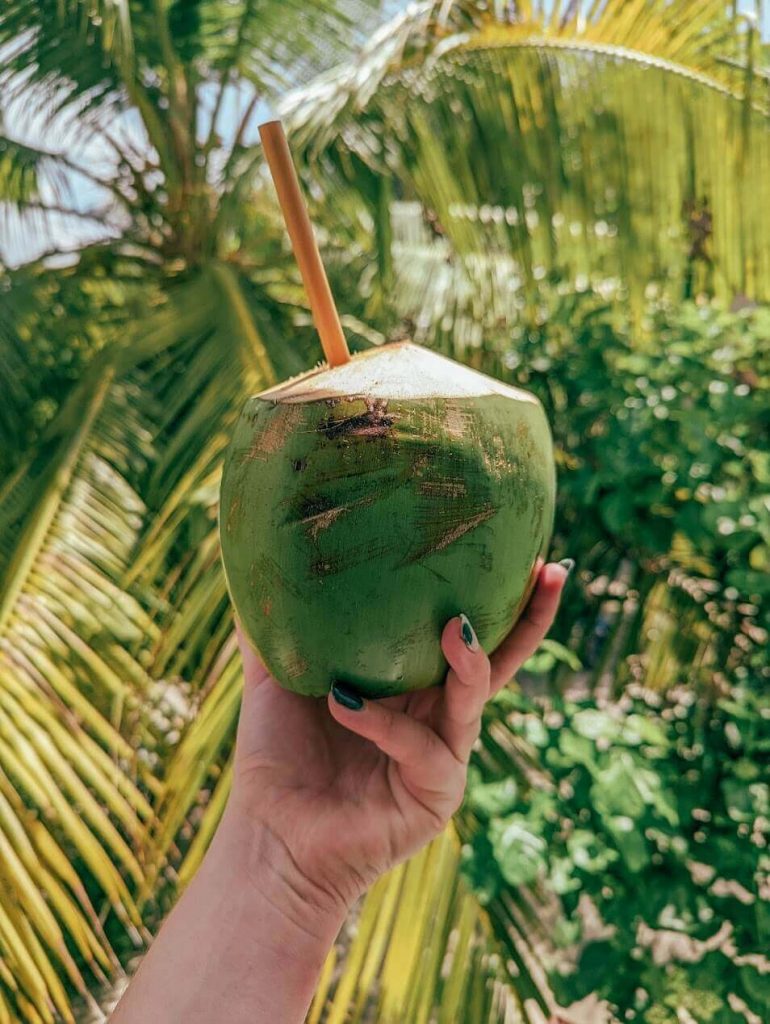
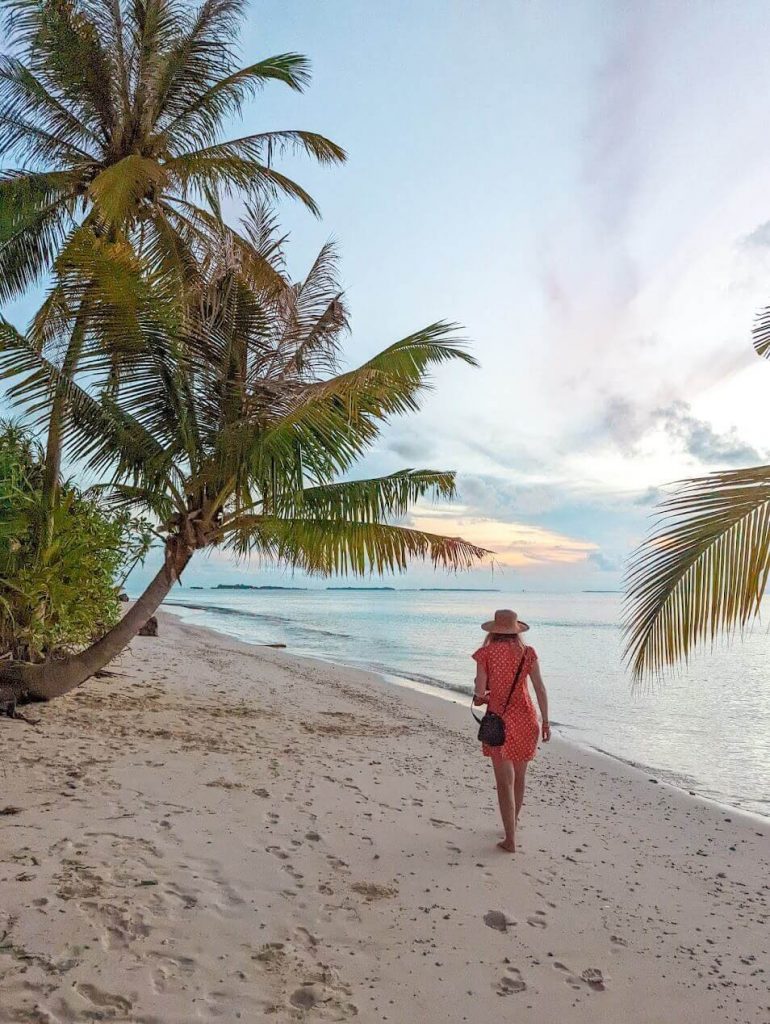
Boating It
For those wanting to maximise their time in the water, the final option is to find a boat tour.
I’m not talking about big cruise liners- the water would be far too shallow for those. I’m talking about small boats offering snorkelling and SCUBA diving tours to limited numbers of tourists.
There are plenty of Liveaboard diving cruises available in the area. However, for those, like me, who lack experience in this area, there are other options.
I booked myself onto G Adventures’ Maldives Dhoni Explorer. This offered seven days of fully catered accommodation on a boat, along with 2-3 snorkelling excursions a day plus visits to deserted islands and sandbars.
Click here to read more about more about why I’d so highly recommend this tour.
